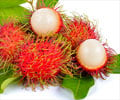A mutation in the DNA sequence of the JAK gene in parent fruit flies has been shown to cause cancer in its offsprings even if they don’t inherit the mutation itself.
A mutation in the DNA sequence of the JAK gene in parent fruit flies has been shown to cause cancer in its offsprings even if they don’t inherit the mutation itself, according to a study conducted in the University of Rochester Medical Center. This gene is closely associated with cancer in humans also.
The researchers say that under some circumstances, having one parent with the mutation is enough to ultimately affect the offspring, even when the mutation itself is not passed to the next generation.“You might assume that a fruit fly that inherits a mutation that can increase cancer is more at risk for the disease than its sibling that does not inherit that mutation,” said geneticist Dr. Willis Li, the lead author of the study and associate professor in the Department of Biomedical Genetics.
“We have found an example where this is not true. We found that the cancer-causing effects of certain mutations can persist in cells that don’t even carry the damaged gene, and that these effects can be passed from one generation to the next even though they’re not actually in the DNA code. The mutation’s effects on the DNA of one of its parents affect the genes of its offspring. Even though the mutation is in one fly but not in another, both are affected equally,” Li added.
During the study, the researchers focused on the interaction between JAK and a gene known as Kruppel, which plays a major role in the development of a fruit fly’s body.
It turns out that Kruppel also enhances an organism’s ability to suppress tumours, and if the normal gene is knocked out or replaced by a faulty version, an organism is more likely to develop cancer when another cancer-causing gene like JAK is present.
The study showed that some flies with a normal version of Kruppel got just as many tumours as their brethren with the bad copy—about three times as many tumours as most fruit flies with the normal version—simply because one of their parents harboured the JAK oncogene.
Advertisement
Li had shown in a previous study that JAK is a more powerful oncogene than previously thought, with the ability to turn on cancer-causing genes that are normally silent, through another epigenetic mechanism involving gene packaging.
Advertisement
Source-ANI
GAN/C











